|
For Brain Mappers around the world, the OHBM annual meeting is a time to meet, network, and learn about the latest progress across the many domains of human neuroimaging. Despite the challenges introduced by COVID19, the virtual conference formats used in 2020 and now in 2021 offer the chance to maintain contacts and benefit from many of the normal features of an in-person conference. In 2020, the COVID19 pandemic forced a rapid transition with little time or resources to enable organizers to fully realize the many social aspects of OHBM that are most beloved by attendees- the ample opportunities for talking around posters, chance hallway greetings that turn into deep and meaningful friendships and collaborations, celebratory parties that ensure you will find all your friends and colleagues to catch up and network for that job or bit of news you are seeking out. Many solutions were created by OHBM attendees, as detailed in our 2020 roundup, and these provided ideas to help shape OHBM2021. In seeking an alternative platform for OHBM 2021, OHBM leadership, with plenty of grassroots input from the community and incredible support from volunteer leadership in the form of a Technology Task Force, took the risk of selecting an alternative open-source meeting software platform, Sparklespaces. This new platform offered the chance to robustly support social engagement while stretching to meet the demands of the more traditional meeting elements offered by competing platforms. One aspect of the decision to go with Sparklespaces was the option for our Program Committee Leadership and our Technology Task Force to work in close collaboration with the Sparklespace developers to ensure that the resulting software met our needs; unlike other providers which offered fixed packages, the Sparkle team was open to co-creating tailored features for our community. As part of this deal, we would retain access to the shared development source code for future meetings. Everyone involved was and remains very enthusiastic about this collaboration, with this year’s platform being affectionately dubbed #PlanetBrain by our Chair, Aina Puce. For those attending OHBM2021, the start of the meeting did not however live up to expectations. A slew of connectivity problems meant that many people experienced sometimes considerable lag in accessing the symposia, poster hall and keynote talks. Here we set out what happened and how things are being rapidly resolved. Before the close of the first day, an update was provided from the Chair of the Technology Task Force, Alex Fornito: The sparkle team and OHBM members worked around the clock to resolve these issues. We deployed a backup stream site within hours and screening room within a day - which allowed another way to watch live streams and explore screening room videos while we resolved the core technical issues. Several fixes incrementally improved performance over the first couple of days, and thankfully, from midway through the Wednesday session we saw a significant improvement in connectivity. The prime culprit - identified by Soichi Hayashi (and the Sparkle Team) - seemed to be that planet brain was bogged down by its handling of user update events, which inform different conference goers of each others’ whereabouts so as to enable a highly collaborative, social experience. As more and more users joined the platform, and moved between the thousands of different events and spaces, each user received a cascadingly large number of update notifications, causing browsers to struggle. Though the platform is well tested at volumes of thousands of users, its scalability with the combination of users, spaces (including posters), and events each being in the thousands had not been tested in combination and led the site to perform poorly. The Education Courses functions performed more smoothly because there were both fewer users, and fewer spaces and events- thus exponentially fewer user-update events.
Soichi’s temporary fix was to switch from receiving real-time events to polling user information, and so limiting the number of updates that a browser must make. This patch substantially improved the performance and user experience of #PlanetBrain’ - and a more permanent fix (requiring more substantial reworking of the codebase) is currently being implemented by the Sparkle team. On June 23rd, OHBM tweeted to inform users of the upgrade to the Poster Hall functionality and invited people to join again, offering an accompanying video to showcase the reboot! The platform should be operating more smoothly, and is closer to the vision developed by the large team of people who worked on putting this conference together. Improvements are ongoing and the OHBM team is appreciative of everyone’s feedback. In addition, rest assured that all talks are being recorded, so anything you may have missed can be rewatched later. If you do have comments on the process or would like to hear more from OHBM Leadership on these and other key issues, OHBM members are invited to join us at the General Assembly and Feedback Forum (Town Hall), 30th June at 9am EDT/1pm UTC (link to be sent by email soon).
0 Comments
Contributions:
Text:
In this episode of Neurosalience, Peter Bandettini meets the OHBM Open Science Special Interest Group (OS-SIG). Together they discuss the history of and the unique, important role the OS-SIG plays in OHBM. The group fosters open science not only by encouraging best practices and sharing data and code, but also by encouraging inclusivity in science and open- ended discussion in a supportive environment.
Guests:
Aki Nikolaidis - is chair of the OHBM Open Science Special Interest Group, and served on the Student Postdoc Special Interest Group from 2017-2019. He is a research scientist at the Center for the Developing Brain at the Child Mind Institute in New York City. His research focuses on using advanced statistical methods to better understand psychopathology, brain organization, and cognitive performance. Aki's work in neuroscience, psychology, and machine learning has been featured in over 20 peer-reviewed publications. Janine Bijsterbosch is chair- elect of the OHBM Open Science Special Interest Group. She is Assistant Professor in the Computational Imaging section of the Department of Radiology at Washington University in St Louis. The Personomics Lab headed by Dr. Bijsterbosch aims to understand how brain connectivity patterns differ from one person to the next, by studying the “personalized connectome”. Using open data resources such as the Human Connectome Project and UK Biobank, the Personomics Lab adopts cutting edge analysis techniques to study functional connectivity networks and their role in behavior, performance, mental state, disease risk, treatment response, and physiology. In addition, Dr. Bijsterbosch wrote a textbook on functional connectivity analyses, which was published by Oxford University Press in 2017. Johanna Bayer is secretary- elect of the OHBM Open Science Special Interest Group, treasurer elect of the OHBM Australia chapter and active member of the OHBM Sustainability and Environmental Group. This year is also her second year behind the scenes helping to organize the OHBM Brainhack. Johanna, who is originally from Munich, Germany has a background in Psychology, Neuroscience and Computer science and was awarded the Melbourne Research Scholarship in 2018 to pursue her PhD at the University of Melbourne. Her PhD work is focusing on creating a normative model of the brain from neuroimaging data to study depression, and on a method to harmonize site-effects in large neuroimaging data sets. In addition to her passion for her work and for Open Science, Johanna also loves dancing, rock climbing, computer science and cats. Katie Bottenhorn is the secretary of the OHBM Open Science Special Interest Group. She is a graduate student who is interested in how large-scale brain network topology varies both between- and within-individuals over the course of everyday life. She is especially interested in how hormonal fluctuations associated with the menstrual cycle and hormonal contraceptives contribute to this variability, and how this differs with respect to changes in sleep, exercise, and stress. Melvin Selim Atay is the inclusivity officer of the OHBM Open Science Special Interest Group. He is working at the Middle East Technical University, Ankara, Turkey and his research focus is explainability of deep learning. OHBM 2021 Keynote Interview Series: Q&A with Anna Wang Roe - Mapping Mesoscale Connectomes6/15/2021 By Nabin Koirala
In light of her upcoming Keynote lecture at OHBM2021, we wanted to get up close with Anna Wang Roe. Dr. Roe is currently the director of the Interdisciplinary Institute of Neuroscience and Technology at Zhejiang University, China. In the interview, we talked about her academic journey and were lucky to hear some backstage stories to get to know Dr. Roe even better.
By Peter Bandettini & the OHBM Neurosalience production team  Professor Nik Weiskopf Professor Nik Weiskopf
In this episode Peter Bandettini finds his similarities with Professor Nik Weiskopf. They are both physicists working at the interface of MRI acquisition and brain physiology and function, plumbing ever more quantitative information about how our brains are organized, how they change with disease and how they vary between individuals. We find out about Nik’s professional history, get into real-time fMRI neurofeedback, and discuss his work on quantitative MRI for deriving maps of myelin, iron content, fiber track direction, and more. All of this done at unprecedented resolutions using their unique Connectome scanner - one of only four in the world.
Guest:
Professor Nik Weiskopf is the Director of the Department of Neurophysics at the Max Planck Institute for Human Cognitive and Brain Sciences. He received his Ph.D. in 2004 from Graduate School of Neural & Behavioural Sciences and International Max Planck Research School in Tübingen, Germany. In 2004 Nik moved to the Wellcome Trust Centre for Neuroimaging at University College London in the UK. He quickly moved up to head the Physics Group there in 2006, becoming Senior Lecturer (equivalent to an associate professor) in 2009. He became full professor of MRI Physics at the UCL Institute of Neurology in 2014 and subsequently moved to the Directorship of Neurophysics at the Max Planck Insitute for Human Cognitive and Brain Sciences in Leipzig in 2015. --- The Neurosalience production team consists of Anastasia Brovkin, Katie Moran, Nils Muhlert, Kevin Sitek, and Rachael Stickland. What to expect from the Diversity and Inclusivity Committee at the 2021 OHBM Annual Meeting6/11/2021
by Rosanna Olsen, Valentina Borghesani and AmanPreet Badhwar on behalf of the OHBM Diversity & Inclusivity Committee
OHBM initially launched a “Diversity and Gender Task Force” in 2017 to address the growing need to recognize and address multiple forms of inequity with respect to gender balance and geographical representation on the OHBM Council. Since 2017, this initiative has worked towards tackling a range of issues surrounding underrepresentation at OHBM. The task force has evolved into a standing “Diversity and Inclusivity Committee” that meets regularly to ensure that the needs of the diverse OHBM community are adequately represented at all levels of the organization and in all of its activities. Not surprisingly, members of the Diversity and Inclusivity Committee liaisons with all OHBM Committees and SIGs throughout the year. During this year’s virtual meeting we are planning a series of different events to highlight and celebrate issues of diversity and inclusivity in OHBM. The 3rd annual DIC symposium: Racial Bias in Neuroscience This is the third year OHBM will feature a symposium devoted to the discussion of issues in diversity that affect our society. In 2019, speakers presented issues of gender equality that are present at the OHBM meeting, it’s leadership, and the field of human brain mapping. Speakers provided an overview on gender imbalances in academia, including citation counts, conference speakers, and prize awardees. The issue of biologically versus culturally driven sex differences in brain anatomy was also discussed. In 2020, speakers discussed neuroscience issues pertinent to the LGBTQ+ community such as underrepresentation of LGBTQ+ individuals in STEM careers and the complex nature of gender/sexuality and how these factors are addressed in research. This year’s symposium will be exploring issues of racial bias in neuroscience. People of color are not well-represented in academia, especially at senior levels (e.g. Full Professor). This year our speakers will discuss issues such as systemic racism and other factors leading to the underrepresentation of Black and Latin scholars. Moreover, as in many areas of science, the majority of human brain mapping research is conducted in homogenous, non-representative populations, which is problematic for the interpretability and generalization of research findings. Strategies for promoting equity within the field of human brain mapping, overcoming current barriers for ethnic minorities in OHBM, and increasing the ethnic diversity within our research samples, will be discussed. This year’s OHBM conference is quickly approaching, including two consistent conference highlights: the OHBM Brainhack and Open Science Room (OSR). To learn more about what we can expect from this year’s events, I spoke to some of the current leadership of the OHBM Open Science Special Interest Group (OSSIG).
Current chair Aki Nikolaidis and secretary-elect Johanna Bayer joined us to talk about ongoing initiatives within the OSSIG, while hackathon co-chairs Matteo Mancini and Tibor Auer and OSR co-chairs Gabriel Gonzalez-Escamilla and Eva Alonzo-Ortiz told us about the upcoming events. By: Elizabeth DuPre Dora Hermes is currently an Associate Professor of biomedical engineering at the Mayo Clinic in Rochester, Minnesota where her work focuses on identifying disease biomarkers and developing neuroprosthetics to interface with the brain.
I had the pleasure of catching up with her before her 2021 OHBM keynote lecture to find out more about her research, what drove her work on iEEG-BIDS, and her advice for early career researchers.
By Peter Bandettini & the OHBM Neurosalience production team 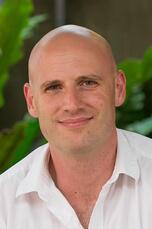 Professor Alex Fornito Professor Alex Fornito
In this episode of NeuroSalience, Peter chats with Alex about connectomics, or the study of the brain’s networks of connections. We discuss Alex’s work leveraging the Allen Brain Atlas (https://portal.brain-map.org/) and fMRI to better understand the genetic basis of the network structure. He points out clear differences between network hubs and other network components, with hubs having important roles in resting state dynamics and in neurological disorders. We also discuss the ongoing challenge of removing physiological noise from the fMRI signal in the context of his new and powerful methods for dissecting it out. Last, we touch on the new iteration of the OHBM virtual platform that Alex was instrumental in developing.
|
BLOG HOME
Archives
January 2024
|
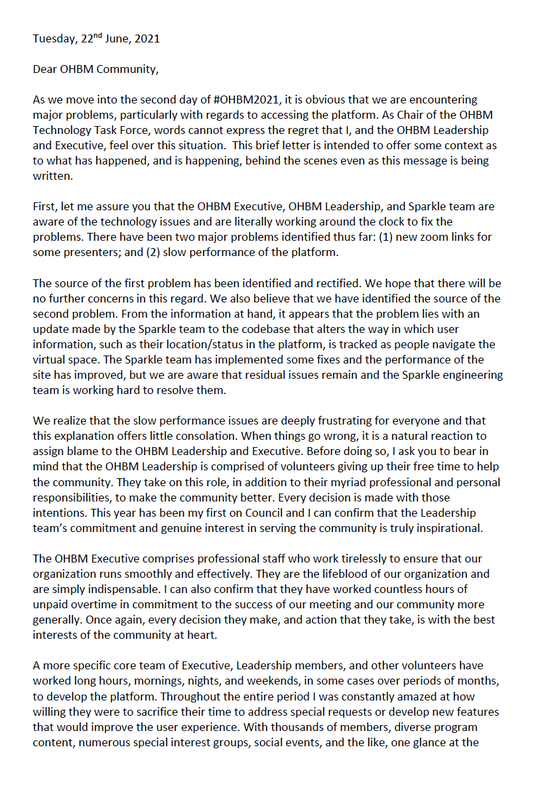
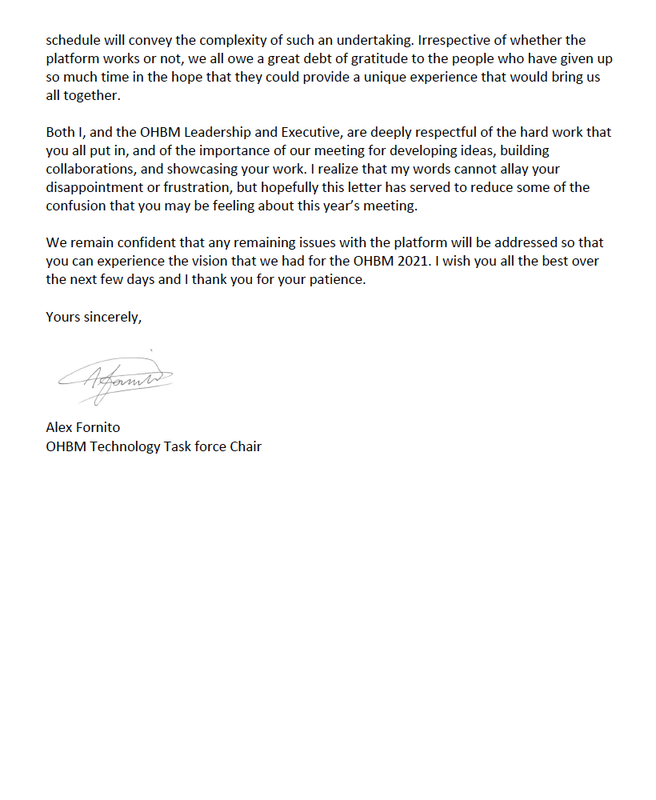
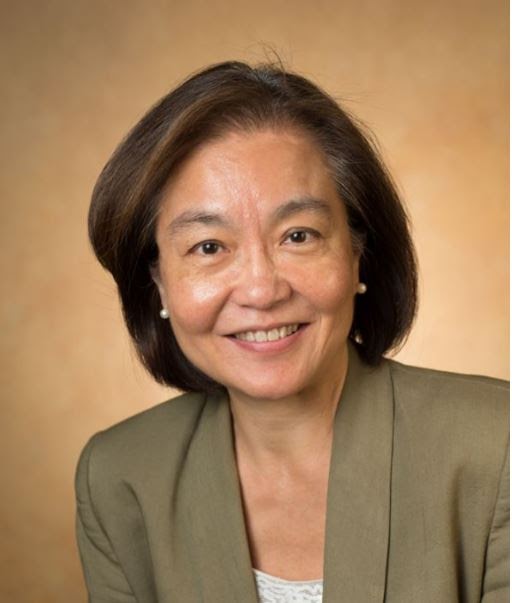
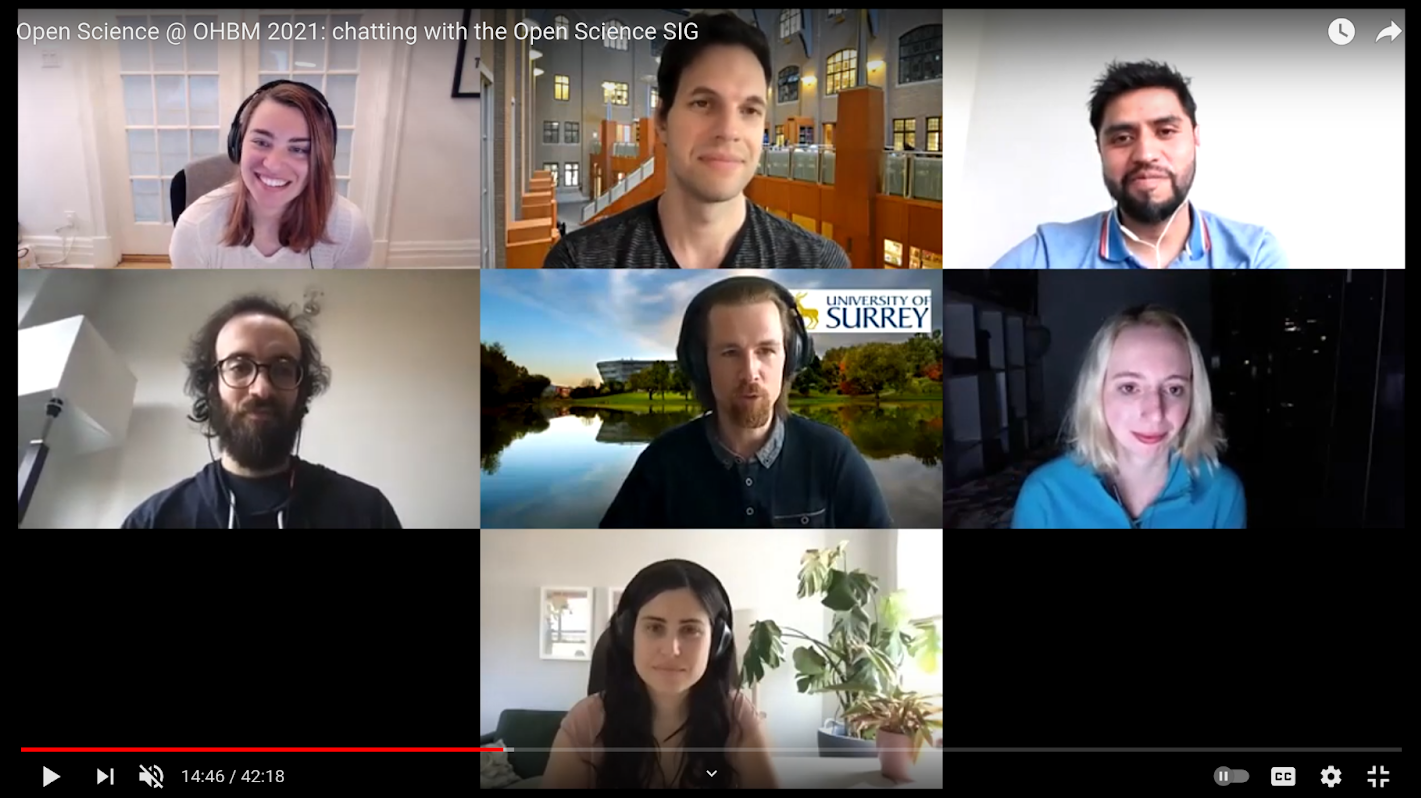
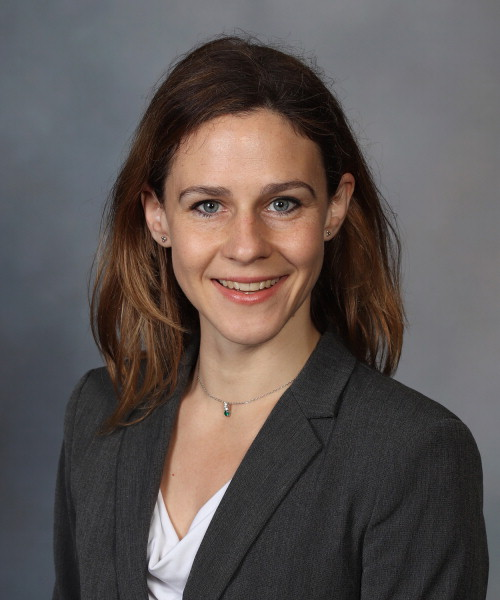
 RSS Feed
RSS Feed